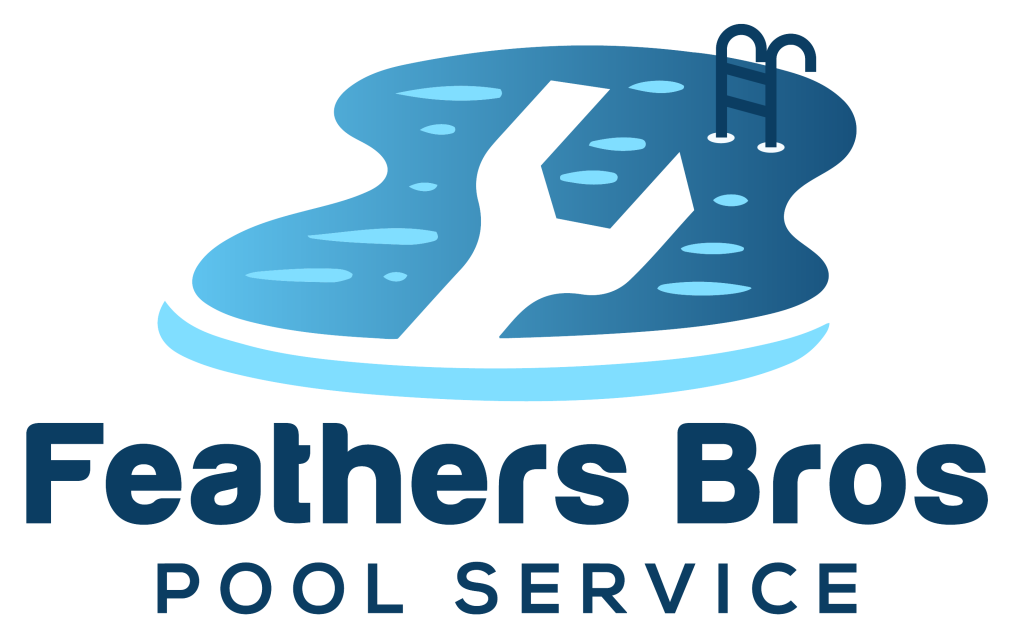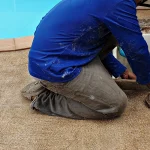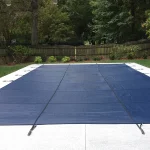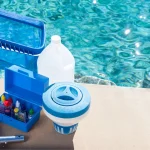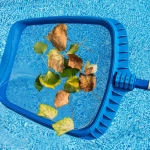Keeping your pool clean and chemically balanced is not only essential for safe swimming but also for the longevity of your pool and its equipment. Improperly balanced pool chemicals can lead to cloudy water, skin irritation, algae growth, or even structural damage.
If you’re here, you’re likely wondering how to find the perfect balance for your pool. Don’t worry—we’ll break it down step by step, covering everything you need to know for crystal-clear, safe swimming water.
For professional pool chemical balancing in Indianapolis, IN, trust Feathers Bros Pool Service to keep your pool water perfectly balanced and swim-ready all season long!
Why Balancing Pool Chemicals Matters
A pool is not just a body of water; it’s a carefully maintained system that requires the right chemical balance. Here’s why proper chemical levels are so critical:
- Hygiene and Safety: Chemicals like chlorine kill bacteria and other pathogens that could harm swimmers.
- Water Clarity: Disbalanced chemicals can cause murky or cloudy water, making your pool less inviting and potentially dangerous.
- Equipment Longevity: Incorrect chemical levels can corrode your pool pump, heater, or liner.
- Comfort: Nobody enjoys burning eyes or itchy skin caused by too much chlorine or low pH levels.
Now that you understand the importance of balanced water, let’s jump into the steps to get it right.
Pool Chemistry Basics
Before balancing your pool, you need to understand the key components:
pH Levels (Ideal Range: 7.2–7.8)
pH measures how acidic or basic your water is. A pH below 7.2 is too acidic and can corrode metal and damage pool equipment. A pH above 7.8 can reduce the effectiveness of chlorine and leave the water murky.
Total Alkalinity (Ideal Range: 80–120 ppm)
Alkalinity acts as a buffer for pH, keeping it stable. If the alkalinity level is out of range, your pH may fluctuate wildly, leading to imbalances.
Chlorine (Ideal Range: 1–3 ppm)
Chlorine is a disinfectant that kills bacteria, viruses, and algae. Too little chlorine creates a breeding ground for harmful microorganisms. Too much chlorine can irritate skin and eyes.
Calcium Hardness (Ideal Range: 200–400 ppm)
Calcium hardness measures the amount of calcium in the water. If it’s too low, the water can become corrosive, damaging the pool’s structure. If it’s too high, it can cause scaling.
Cyanuric Acid (Ideal Range: 30–50 ppm)
Cyanuric acid stabilizes chlorine, preventing it from being broken down too quickly by the sun. However, levels that are too high can reduce chlorine’s effectiveness.
Metals (Copper & Iron Levels)
High levels of metals like copper and iron can lead to water discoloration and staining of the pool’s surface. Metals often enter your pool through source water or old pipes.
Armed with this foundational knowledge, you’re ready to start balancing your pool chemicals step by step.
Step-by-Step Guide to Balancing Pool Chemicals
Step 1: Test Your Water
Begin by testing your pool water. Use a pool water testing kit or digital tester to measure pH, alkalinity, chlorine, calcium hardness, and cyanuric acid levels. Take note of each reading to determine which chemicals need adjusting. You can test at home or take a water sample to your local pool store for professional analysis.
Step 2: Adjust Alkalinity First
Always begin by fixing your total alkalinity, as it stabilizes pH levels. Use sodium bicarbonate (baking soda) to increase alkalinity or muriatic acid to decrease it. Make small adjustments at a time and wait several hours before retesting.
- To Raise Alkalinity: Add baking soda gradually. For every 10 ppm increase needed, add 1.5 pounds of baking soda per 10,000 gallons of water.
- To Lower Alkalinity: Dilute muriatic acid in water before adding it slowly to your pool.
Step 3: Balance the pH
Once alkalinity is within the ideal range, focus on adjusting the pH.
- To Increase pH: Use a pH increase, which is usually sodium carbonate (soda ash).
- To Decrease pH: Use a pH decreased, which typically contains sodium bisulfate or muriatic acid.
Retest the water after a few hours to ensure the pH levels are stable.
Step 4: Adjust Chlorine Levels
Test and adjust your chlorine levels next. If the chlorine level is low, add pool-grade chlorine (like chlorine tablets, liquid chlorine, or granular chlorine). If it’s too high, simply allow time for the chlorine to dissipate naturally, or use a chlorine neutralizer.
Pro Tip: To improve the effectiveness of chlorine, check and adjust your cyanuric acid levels. Too little cyanuric acid means chlorine will dissipate quickly under sunlight.
Step 5: Manage Calcium Hardness
If calcium levels are outside the safe range, take the following steps:
To Increase Calcium Hardness: Add calcium chloride to the water in small doses and retest.
To Lower Calcium Hardness: This requires diluting your pool water with fresh water, as there’s no chemical to reduce calcium levels directly.
Proper calcium levels can prevent scaling on tiles and pool equipment while maintaining water clarity. For expert pool equipment maintenance in Indianapolis, IN, trust Feathers Bros Pool Service to keep your pool running efficiently and looking its best!
Step 6: Monitor Metals and Other Contaminants
If your water test reveals metals, use a metal sequestrant to bind with the metals and prevent staining. If there’s significant discoloration, you may need to partially drain and refill your pool.
Maintenance Tips to Keep Pool Chemicals Balanced
Balancing your pool is not a one-time task. Regular maintenance ensures your pool stays clean and safe. Here are some tips:
- Test water weekly for pH, alkalinity, and chlorine, and monthly for calcium and cyanuric acid levels.
- Keep your pool filter clean and operational to prevent debris accumulation.
- Shock your pool weekly or bi-weekly to destroy chloramines and refresh the chlorine.
- Add a pool cover when the pool is not in use to reduce evaporation and contamination.
- Consider investing in an automatic pool chemical monitor for real-time updates.
Common Mistakes to Avoid
Even experienced pool owners can make mistakes. Here are some common pitfalls to steer clear of:
- Adding Chemicals All at Once: This can cause imbalances. Make changes gradually.
- Ignoring Water Testing: Proper testing is essential for accurate adjustments.
- Over-relying on Chlorine: While chlorine is crucial, additional factors like pH, alkalinity, and cyanuric acid directly impact its effectiveness.
- Skipping Regular Maintenance: Maintaining your pool weekly is easier (and cheaper) than dealing with long-term neglect.
Take the Plunge into Safer Swimming
Balancing pool chemicals might seem overwhelming at first, but with the right approach, it becomes second nature. By maintaining the pH, alkalinity, chlorine, and other levels within the recommended ranges, you can enjoy clear, safe water all season long.
If you’re new to pool maintenance, consider investing in a quality testing kit or seeking professional help for your first few balances. Regular testing and small adjustments are all it takes to keep your pool in its best condition.
Your pool is your oasis, and with the proper chemical balance, it will always be welcoming for a fun and safe swim! For hassle-free upkeep, trust Feathers Bros Pool Service for expert pool maintenance services in Indianapolis, IN, ensuring your pool stays clean, balanced, and swim-ready all season long.
